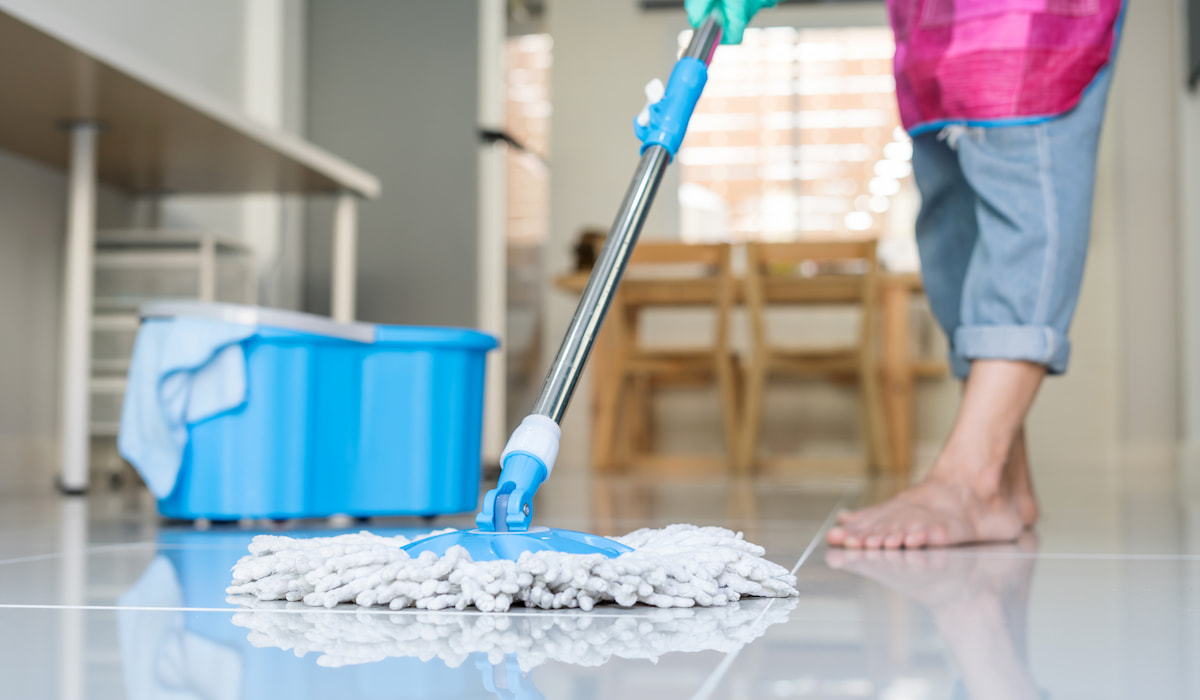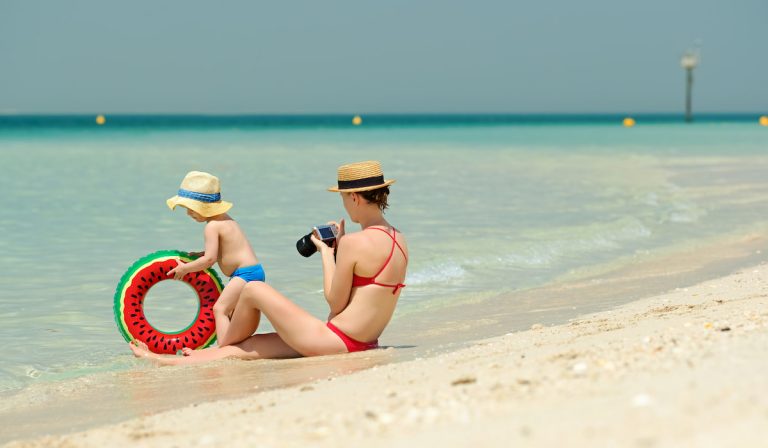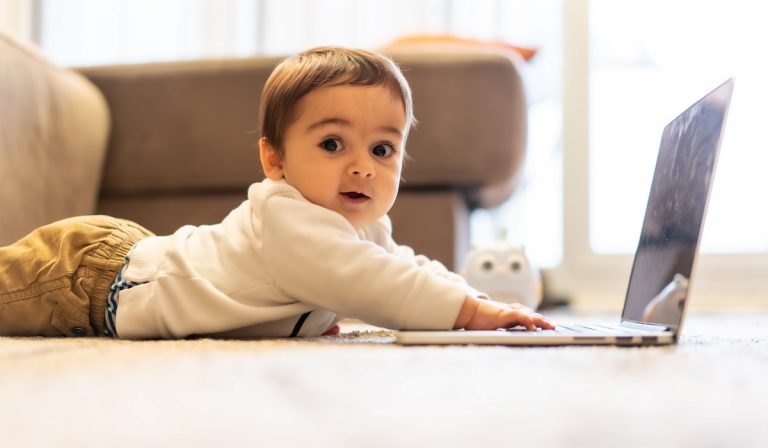3 Reasons You Should Be Mopping with Vinegar
*This post may have affiliate links, which means I may receive commissions if you choose to purchase through links I provide (at no extra cost to you). Please read my disclaimer for additional details. Thank you for supporting the work I put into this site!
Did you know that you could save plenty of money by switching your household products for a basic, inexpensive ingredient that’s already in your pantry? What is this marvelous invention, you ask? Distilled white vinegar.
Vinegar is a non-toxic, versatile and affordable liquid that is used in most cleaning products. Don’t believe me? Just check the ingredients list! You’ve probably heard of its disinfecting properties before, but maybe you’re hesitant of using it because of its distinctively strong scent.
Don’t be afraid of the smell (it goes away right away), instead consider how much you are helping the environment while saving money. So if you’re interested in switching to a chemical-free and inexpensive way to keep not only your floors but every surface in your home clean and germ-free, read on.

1. Vinegar is safe to use
Commercial products, even the ones advertised as “eco-friendly” or “natural”, may contain ingredients that are corrosive or flammable and can cause adverse reactions on people and animals. You don’t want to put yourself or your loved ones at risk, right?
These cleaning supplies release volatile organic compounds (VOC’s) and other chemicals that can cause respiratory problems like asthma, allergic reactions (such as irritated eyes and throat), headaches, and even cancer. Fragrances, for example, are known to have endocrine-disrupting chemicals.
The companies that produce these products don’t need the Food and Drug Administration (FDA) stamp of approval to put them in the market, so labels are not accurate. Customers are uninformed about the potential health risks since many of the ingredients used are not safe or effective.
Standard white vinegar contains 4-7% acetic acid diluted in water; vinegar that is used strictly for agricultural or cleaning purposes has up to 20% and is not for human consumption. This fermentation is mostly obtained from grain alcohol (ethanol), so it’s an innocuous cleaning agent with gentle bleaching and anti-bacterial properties. Meaning you don’t have to worry about Spot or your little ones playing on the floor.
2. It’s Economical and Practical

Only a small amount of vinegar diluted in water is needed to clean a large area. A gallon of vinegar costs a fraction of a commercial household product, and there are so many uses for it. With this powerful liquid, you can easily clean and sanitize kitchen counters, windows, bathrooms, showerheads, carpets, etc. It can easily be mixed with baking soda for scrubbing, or even with dishwashing soap to remove tough grease stains on clothes.
Distilled white vinegar removes dirt, deodorizes, disinfects, dissolves grease and hard water stains, freshens and softens laundry, cleans windows without leaving streaks, you name it. It is biodegradable and non-toxic, so there’s no need to worry about reusing the bottle as many times as needed.
It’s a common ingredient when preparing foods, so it’s given you will have at least a small bottle at home to prepare a vinaigrette for today’s dinner.
3. It Can Be Used On Most Surfaces
Check your floors before using vinegar on them. Its acidic properties can harm certain materials and cause major damage to them.
Distilled white vinegar works great on porcelain or tile floors, but avoid granite, marble, and soapstone, since it can make it lose its shine. Instead, opt for liquid dish soap and warm water, or a special product made specifically for your surface. Natural stone finishes can be especially finicky.
When it comes to hardwood or laminated floors, some people love vinegar, but others have reported causing damage to the finish. Use specifically formulated cleaners or test on a small, innocuous area before mopping thoroughly. You always want to test any surface in a small area before using any cleaner, and vinegar is not exempt from that process.
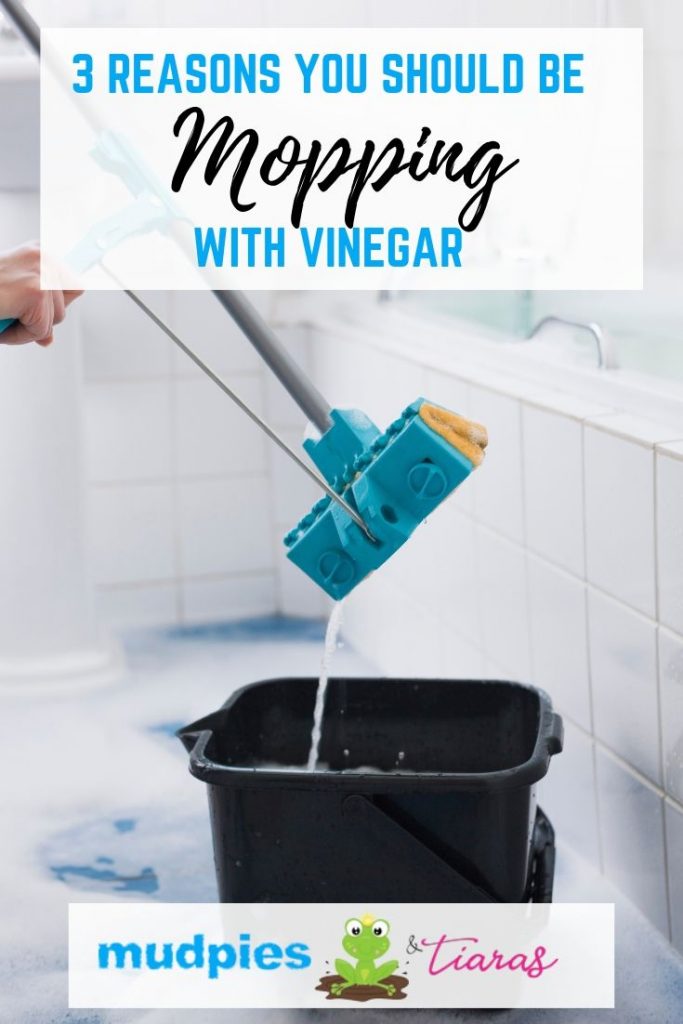
How To Clean Using Vinegar?
Floors
Get started with a mixture of ¼ to a ½ cup of distilled white vinegar and 1 gallon of warm water in a bucket. The smell only lasts a few minutes, but if it’s to be too harsh for you, add essential oils like lemon or orange to make it more pleasant.
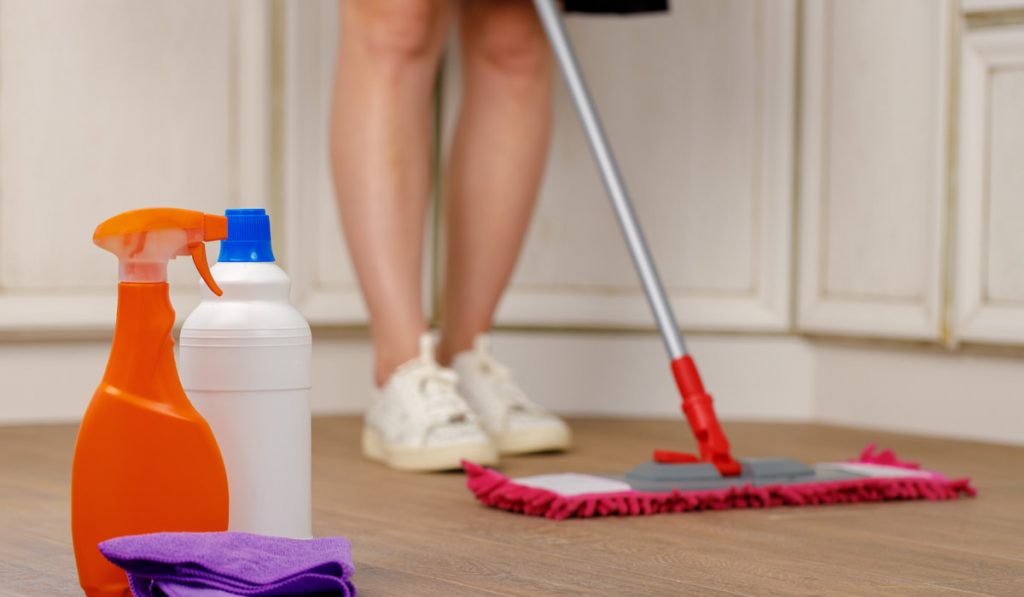
Make sure you’ve swept or vacuumed thoroughly so there are no crumbs or loose dirt on the way. Dip the mop and work your way through the floors, scrubbing on any tough spot. Once you’re done with the mopping, allow it to air dry and you’ll have a streak-free floor with no odor. If you’re moving to a different room, rinse the mop on the faucet before you dip it on the bucket again. You do not want to contaminate the clean mix with dirt!
Once you’re done, you can safely discard the water in your garden (vinegar is great for getting rid of weeds) or reuse it to flush the toilet.
Surfaces
For counters and cabinets and just about any other surface, use the same mixture of vinegar noted above and use a spray bottle instead of a bucket. Spray the surface thoroughly and then, using a soft cloth (I love these microfiber cloths), wipe everything down.
Things to Note
Vinegar is a hazardous free substance, but there still are a few things you need to be aware before you start furiously scrubbing your floors.
- Don’t mix vinegar with bleach. The mix will expel fumes that can be damaging to respiratory health, even lethal.
- If you are feeling too sensitive to the strong smell of vinegar, open windows or ventilate the area, as you would do while cleaning with any other commercial product.
- Vinegar can be used to clean almost anything, but avoid using it to remove egg stains. The acidity can cause the egg to coagulate and make it even more difficult to eliminate.

